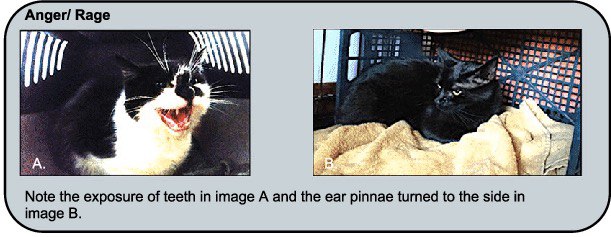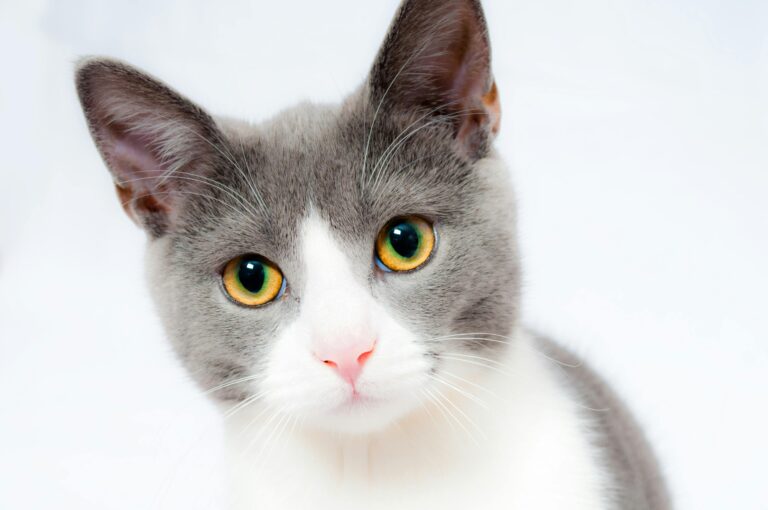What signs will a cat show when it is angry? Will it show on its face?
Of course!
In 2012, researchers at University College Dublin collected 372 photos of cats’ facial expressions and, combined with 45 research papers, published “A Digital Guide to Recognizing Feline Facial Emotions.”
They identified five basic cat emotions: interest, contentment/happiness, fear, joy, and anger/irritation.

When angry, cats communicate their emotions through facial expressions, body language, and vocalizations. This includes the classic “sullen face”:
Angry Cat Signs
1.Facial Expressions
Ears: Pupils contract suddenly, even when there’s no change in light. This may indicate aiming, alertness, or a prelude to attack.
Eyes: A fixed gaze, following the target without moving, is a threat and a warning.
Beard: Fluttering forward (a threat or insult before a fight); or facing sideways or back (preparing a fight).
Mouth: Baring teeth (exposing teeth) is a clear warning.

2.Body Language
Arching the back: Arching the body to appear taller and more intimidating.
Bristling hair: The hair on the back and tail stands up to appear larger, to gain the upper hand, and to intimidate the opponent.
Tails: Swiftly whipping the tail side to side like a whip signals extreme impatience and anger.

3.Sounds and Movements
Sounds: Cursing, including howling (“Old Wu~”), growling (simulating a tiger or other large roaring cat), and hissing (simulating a snake);
Slapping: Extending a claw and slapping quickly (this isn’t actually an attack, but rather a final warning);
Biting, scratching, and scratching: Ultimate means.

How to soothe an angry cat?
If you notice your cat’s angry face, the correct approach is:
1.Immediately stop what you’re doing.
Whether you’re forcibly hugging or petting your cat, or doing anything that scares it, stop immediately.
Don’t restrain your cat, and try not to stare at it too long, especially not directly into its eyes. In a cat’s world, prolonged staring signals aggression; a slow blink can signal friendliness.

2.Stabilize Emotions
Studies have shown that cats can sense human emotions and are more inclined to approach those who display positive emotions.
So, in this situation, you should first calm yourself down and calm down, then approach your cat with gentle words to soothe it.

3.Give your cat what it wants personally
Prepare your cat’s food and personally serve it, including treats, (don’t serve it yourself). Let your cat understand that by approaching you, they’ll get something delicious.
Play with your cat yourself. Exercise boosts dopamine levels in multiple brain regions, boosting overall happiness.
This helps your cat associate happy memories with you, making them less fearful.

4.Let your cat choose freely.
Don’t force your cat to do anything. Let your cat initiate all interactions.
Don’t hit, scold, or punish your cat, especially if it accidentally scratches or injures you out of fear. Avoid punishment! Hitting, scolding, or punishing your cat will only exacerbate its fear and aggression, and will undermine trust between you.
Leave your cat alone for a while to calm down and adjust. When it’s hungry or needs something, it will naturally come to you…





